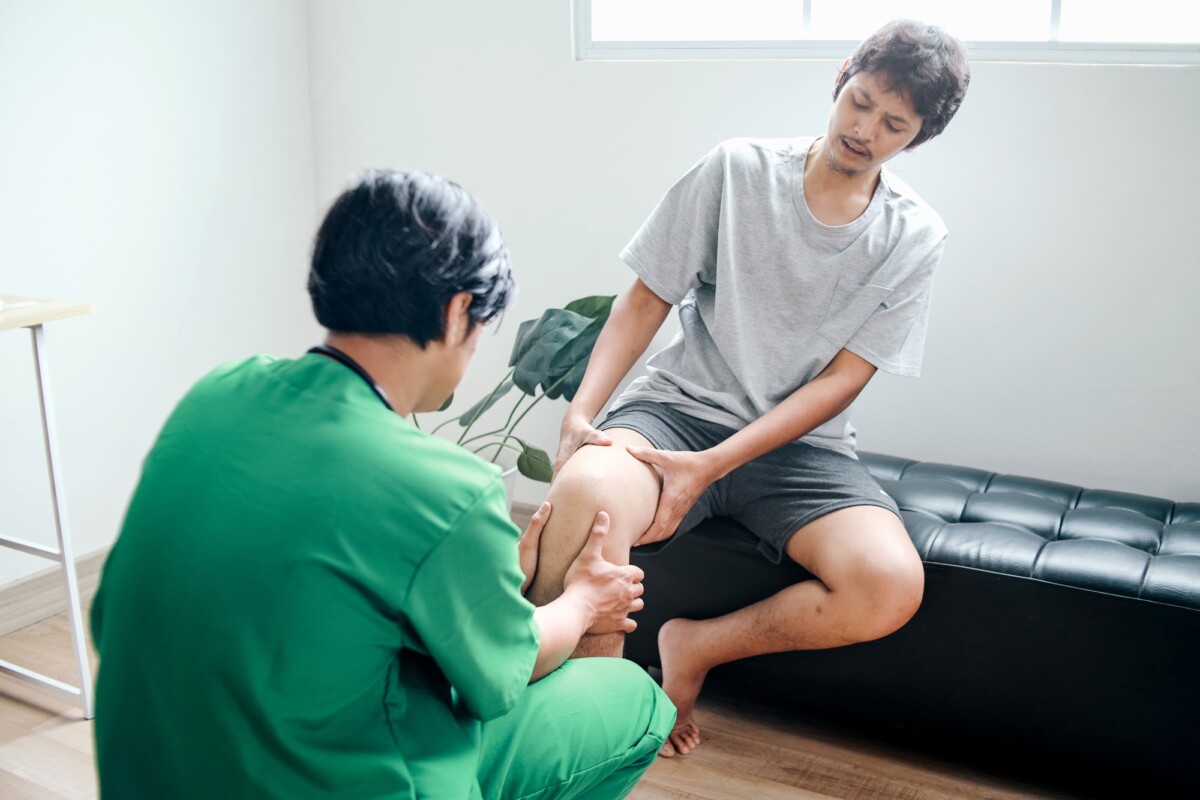Osteoarthritis in Feet: What It Feels Like and How to Manage It
[tta_listen_btn]
Osteoarthritis in feet is one of the most debilitating and chronic joint conditions affecting millions of people worldwide. As the population continues to age and lifestyle-related factors such as obesity and sedentary behavior rise, the prevalence of foot osteoarthritis is also increasing. In 2025, new research and improved treatment options offer hope, but the challenges of early diagnosis and effective long-term management still persist.
This comprehensive guide provides an in-depth look into osteoarthritis in feet, including symptoms, causes, diagnosis, treatment options, and tips for managing the condition daily. It also covers the latest developments in 2025 and answers frequently asked questions to help you better understand how to live with this chronic condition.
Understanding Osteoarthritis in Feet
What is Osteoarthritis in Feet?
Osteoarthritis (OA) is a degenerative joint disease that occurs when the cartilage that cushions the ends of bones wears down over time. In the feet, this condition most commonly affects the big toe joint (first metatarsophalangeal joint), the midfoot, and the ankle. When cartilage erodes, bones can rub against each other, causing pain, swelling, stiffness, and reduced mobility.
Unlike inflammatory arthritis, osteoarthritis in the feet is classified as a “wear-and-tear” condition, although inflammation can still be present. It is the most common form of arthritis in the foot and ankle.
Causes of Osteoarthritis in Feet
Osteoarthritis can develop for many reasons. The most common causes include:
-
Age: Aging is the number one risk factor. The wear and tear on joints over time lead to OA.
-
Genetics: A family history of osteoarthritis increases the risk of developing the disease.
-
Foot injuries: Past trauma or injuries to the foot or ankle, even if they occurred years ago, can lead to post-traumatic arthritis.
-
Obesity: Carrying extra weight places added stress on the joints, especially in weight-bearing areas like the feet.
-
Repetitive stress: Jobs or activities that put repeated stress on the foot joints can lead to degeneration.
-
Joint deformities: Structural abnormalities such as flat feet or high arches can contribute to uneven stress distribution, accelerating joint wear.
-
Gender: Women are more likely to develop osteoarthritis, especially after menopause.
Symptoms of Osteoarthritis in Feet
Recognizing the early symptoms of osteoarthritis in feet is crucial for early intervention. The most common signs include:
-
Pain and tenderness: Especially after movement or prolonged activity.
-
Stiffness: Most noticeable in the morning or after rest.
-
Swelling: Around the affected joints, often accompanied by warmth.
-
Limited range of motion: Difficulty bending or flexing the foot or ankle.
-
Grinding or popping: Sensation when moving the joint.
-
Bone spurs: Extra bone growths that may cause additional pain.
-
Changes in gait: To compensate for the pain, a person may walk differently.
Diagnosing Osteoarthritis in Feet
Accurate diagnosis is essential for managing osteoarthritis effectively. In 2025, diagnosis typically involves a combination of:
Physical Examination
A healthcare provider will check for visible signs like swelling, tenderness, or deformity and assess the joint’s range of motion and functionality.
Imaging Tests
-
X-rays: Reveal joint space narrowing, bone spurs, and other signs of cartilage loss.
-
MRI scans: Useful in detecting early cartilage damage that might not show up on X-rays.
-
Ultrasound: Can evaluate soft tissue and inflammation in real-time.
Laboratory Tests
Blood tests are often used to rule out other types of arthritis, such as rheumatoid arthritis or gout.
The 4 Stages of Osteoarthritis in Feet
Osteoarthritis is a progressive condition that typically advances in four stages:
Stage 1: Minor
-
Slight wear and tear in the joint.
-
Little to no pain or functional limitations.
-
It may show minor bone spur development on X-rays.
Stage 2: Mild
-
Cartilage begins to thin.
-
Increased joint stiffness, especially after rest.
-
Discomfort during physical activity starts to appear.
Stage 3: Moderate
-
Noticeable erosion of cartilage.
-
Frequent pain, swelling, and stiffness.
-
Decreased mobility and more pronounced bone spurs.
Stage 4: Severe
-
Significant cartilage loss; bones may rub directly.
-
Chronic pain and limited mobility.
-
Possible deformity of the foot or ankle.
Living with Osteoarthritis in Feet in 2025
Thanks to medical advancements, managing osteoarthritis has improved significantly. While a cure doesn’t yet exist, lifestyle modifications and treatment can reduce symptoms and improve quality of life.
Treatment Options for Osteoarthritis in Feet
Non-Surgical Treatments
-
Medications
-
NSAIDs (Non-Steroidal Anti-Inflammatory Drugs) Help reduce inflammation and relieve pain.
-
Topical analgesics: Creams or gels that provide localized pain relief.
-
Corticosteroid injections Offer temporary relief by reducing inflammation in the joint.
-
Hyaluronic acid injections: Emerging in 2025 as an alternative to steroids with longer-lasting effects.
-
-
Physical Therapy
-
Exercises to strengthen foot and ankle muscles.
-
Stretching routines to improve flexibility and reduce stiffness.
-
-
Orthotics
-
Custom-made shoe inserts can redistribute pressure and improve foot mechanics.
-
-
Lifestyle Changes
-
Weight loss: Even a 5% reduction in body weight can significantly reduce symptoms.
-
Low-impact exercise: Swimming, cycling, and yoga are excellent for joint health.
-
-
Assistive Devices
-
Canes or walking sticks to reduce pressure on the affected foot.
-
Foot braces or ankle supports to stabilize the joint.
-
Surgical Options
When conservative treatments fail, surgery may be required.
Common Surgical Procedures
-
Arthroscopy: Minimally invasive procedure to remove debris or loose cartilage.
-
Osteotomy: Realigns bones to relieve pressure on the joint.
-
Joint fusion (arthrodesis): Permanently fuses bones together to eliminate movement in a painful joint.
-
Joint replacement: In severe cases, the joint may be replaced with an artificial implant (rare for the foot, but options are evolving in 2025).
Preventing Osteoarthritis in Feet
While some risk factors can’t be avoided, others can be managed. Prevention strategies include:
-
Wearing proper footwear: Supportive, well-fitting shoes reduce joint stress.
-
Avoid high-impact sports, Especially if you’ve had previous foot injuries.
-
Maintaining a healthy weight: Eases pressure on foot joints.
-
Stretching and strengthening: Regular exercise helps maintain joint health and stability.
How Osteoarthritis in Feet Affects Quality of Life
Foot osteoarthritis can significantly impair mobility and independence. People may find it difficult to:
-
Walk for extended periods.
-
Stand without discomfort.
-
Climb stairs.
-
Perform routine activities like shopping or cleaning.
The psychological toll is also real. Chronic pain and reduced mobility may lead to social isolation, depression, or anxiety. That’s why a comprehensive care plan that includes both physical and emotional support is crucial in 2025.
New Treatments and Research in 2025
Exciting developments are being made in the field of osteoarthritis treatment. These include:
Regenerative Medicine
-
Stem cell therapy: Offers the potential to regenerate damaged cartilage.
-
Platelet-rich plasma (PRP): Injected into joints to reduce inflammation and promote healing.
Gene Therapy
Research is ongoing into modifying genes responsible for cartilage degradation, which could slow or stop disease progression.
Wearable Technology
New smart insoles and gait monitoring devices provide real-time feedback to adjust movement and reduce joint stress.
Digital Health Platforms
Telehealth and AI-based apps help patients track symptoms, medication adherence, and activity levels, improving self-management.
Coping Tips for Daily Life with Osteoarthritis in Feet
Living with osteoarthritis in feet can be manageable with proper strategies:
-
Morning routines: Start the day with gentle foot stretches.
-
Foot soaks: Warm baths help relax stiff joints.
-
Keep moving: Inactivity can worsen stiffness, so incorporate regular movement.
-
Rest smartly: Avoid overuse of the affected foot, and take breaks when needed.
-
Stay informed: Learn about your condition and treatment options to make empowered decisions.
FAQs About Osteoarthritis in Feet
What are the signs of arthritis in your feet?
Common signs include pain, stiffness, swelling, and limited mobility. You may also notice changes in how you walk or discomfort after standing or walking for long periods.
How to help osteoarthritis in feet?
Management involves pain-relief medications, physical therapy, lifestyle changes such as weight loss, orthotics, and in severe cases, surgery. Staying active and maintaining foot strength can significantly help.
Will I end up in a wheelchair with osteoarthritis?
While osteoarthritis can be debilitating, most people manage symptoms well with early treatment. Only severe, untreated cases might lead to significant disability requiring mobility aids.
What are the 4 stages of osteoarthritis in feet?
The stages are:
-
Minor – Slight wear-and-tear
-
Mild – Noticeable discomfort
-
Moderate – Cartilage erosion and regular pain
-
Severe – Significant damage, limited movement, and possible deformity
Final Thoughts
Osteoarthritis in feet is a progressive, chronic condition, but it doesn’t have to define your quality of life. In 2025, individuals living with this condition have more tools, therapies, and technologies than ever before to manage symptoms and maintain mobility. Understanding the stages of osteoarthritis, recognizing symptoms early, and working closely with healthcare providers are key to maintaining an active and fulfilling life.
By incorporating lifestyle changes, staying informed about treatment options, and being proactive in managing symptoms, you can minimize the impact of foot osteoarthritis and continue doing the activities you enjoy. Whether you’re newly diagnosed or have been living with osteoarthritis for years, there is always room for improvement in comfort, mobility, and overall well-being.
No more confusion—get expert Medicare help now at NewMedicare.com or 📞 (833) 203-6742!






